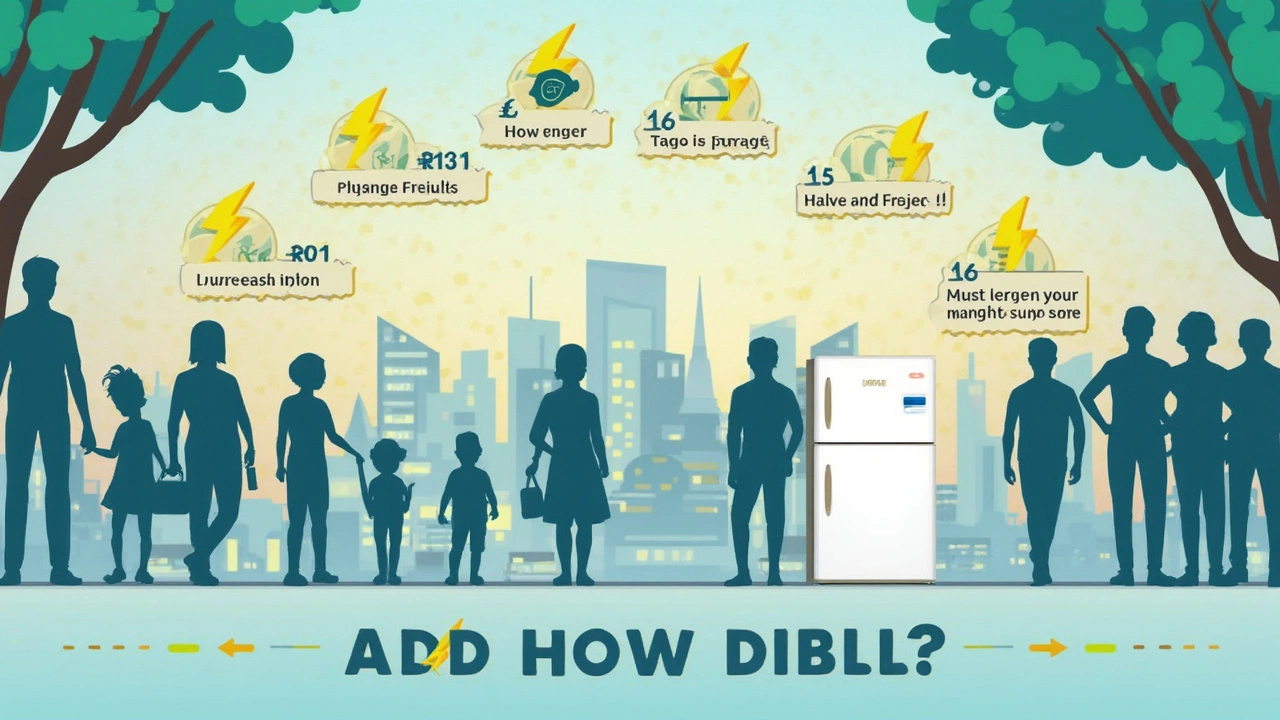
You might think that mini fridges are harmless little cubes, just humming along quietly under your desk or in the corner of the dorm room. They’re definitely cute, and hey, who doesn’t love cold drinks within arm’s reach? But here’s the kicker: that convenience could be quietly squeezing your wallet every month when the electric bill lands. I learned this the hard way after stacking mine with energy drinks during a marathon gaming session. The next month’s bill? Ouch. Want to know if your mini fridge is running up your electric bill and what you can actually do about it? Buckle up, because there’s more to this humble little appliance than meets the eye.
How Much Power Do Mini Fridges Really Use?
Let’s cut to the chase: mini fridges do consume electricity, but the story isn’t as simple as "small fridge, small bill." On average, a modern mini fridge uses anywhere between 100 to 250 kilowatt-hours (kWh) per year, depending on its size, age, and model. For comparison, the big fridges in most kitchens usually clock in around 400 to 800 kWh per year.
But here’s where things get interesting. Not all mini fridges are created equal. Those older, cheap models—the kind you hand down to a college freshman—can sometimes be real power hogs. Some aging mini fridges slurp up close to the same energy as a full-size fridge. If you spot a really old model on a curb, there’s a good chance its energy efficiency is from the Stone Age.
Energy Star tested a bunch of compact fridges and pointed out that newer, Energy Star-certified models use way less power than legacy ones. For example, an Energy Star mini fridge that’s 3.1 cubic feet might only use around 215 kWh yearly. Meanwhile, older or non-certified models can sometimes creep up to 350 kWh or higher.
So what’s that mean for your electric bill? Look at it this way: if you pay $0.15 per kWh (a U.S. average in 2025), the yearly cost for running a modern mini fridge could be as low as $15–$40. Older units might land closer to $50–$60 a year or more, especially if they struggle to keep cool. Put another way, that’s a pizza or two a month, vanishing into thin air. If you’re someone like me who loves a cold soda at midnight, those dollars add up.
Factors That Make Mini Fridge Energy Use Spike
Mini fridges aren’t all evil, but a few sneaky things can make their power use climb. First, location is huge. Shove a mini fridge under a desk, next to a space heater, or into a sun-baked garage, and you force it to work double time. My buddy almost melted his during one sticky summer by wedging it between his gaming PC and a window that got afternoon sun. His fridge’s tiny compressor didn’t stand a chance—and his bill spiked too.
Packing your fridge to the gills can also stress the compressor. These machines are happiest with good airflow inside, not jammed with leftover pizza boxes and six-packs. Speaking of airflow, blocking the vents in the back or sides traps heat and makes the motor run longer, burning more electricity every time you open the door for a snack.
Here’s another weird one I learned with my own fridge: frost build-up. If your mini fridge isn’t frost-free (most aren’t), a thick layer of ice forces it to work longer and harder. That translates directly into wasted power. Every few months, unplug and defrost if you notice the freezer section looking like the North Pole.
Oh—and check the gaskets. If you feel cold air leaking around the door, you’re basically refrigerating your kitchen. Bad seals mean wasted cash. I fixed mine with a cheap gasket kit online, and suddenly Max, my dog, stopped hogging the fridge’s cold breeze every summer afternoon.

Mini Fridges vs. Regular Fridges: Is Smaller Actually Cheaper?
It’s easy to think smaller equals cheaper, but sometimes mini fridges aren’t the best bargain for energy use. Full-size fridges tend to be built with more efficient compressors and better insulation. The little guys often cut corners on thicker insulation because they’re chasing that compact size, which means they can leak cold faster than their big cousins.
Here’s a wild stat: a cheap, non-Energy Star mini fridge could use twice as much energy per cubic foot than a decent modern full-size fridge. So, if you’ve got a beat-up mini fridge running 24/7 alongside your main fridge (for sodas, snacks, or beer), you’re probably doubling up on unnecessary electricity use. It might actually cost more than squeezing everything into a slightly bigger, efficient regular fridge.
When you measure cost per cubic foot, the mini fridge isn’t always the winner. But if you only need the extra space occasionally, or in a small dorm or office, then a mini fridge still has its place—just be picky about the model and how you use it.
Some people think unplugging the mini fridge between uses is a pain, but if you use it mostly for parties or guests, it might be worth plugging it in only when needed. Even Luna, my cat, knows when something’s running all day for no reason.
Smart Tips to Lower Your Mini Fridge Power Bill
Let’s get into what everyone really wants—saving money. If you already have a mini fridge or are thinking about grabbing one, a few smart tweaks can go a long way:
- Mini fridge electricity can drop by 25% or more just by upgrading to an Energy Star-certified model. Look for the yellow EnergyGuide sticker. That little label isn’t just marketing fluff—it tells you what you’ll actually spend each year to run the thing.
- Place your mini fridge where it’s cool and has space to breathe. Avoid placing it next to ovens, radiators, or anywhere the sun streams in. Good airflow is key—leave a couple of inches of space behind and on the sides.
- Don’t overload the fridge. Overstuffing means poor air circulation and forces the compressor to stay on longer. Leave a bit of breathing room for cold air to move around.
- Regularly defrost the unit, especially if ice starts to build up. Even a quarter inch of frost is enough to make the motor hustle harder.
- Check the door seal every few months. Quick way: close the door on a dollar bill and try to pull it out. If it slides out easily, that means your seal isn’t tight anymore.
- If you use your fridge seasonally (like in a dorm), unplug it, clean it out, and leave the door open when not in use. Mold is no fun, and neither is wasting money on unused appliances.
- Consider smart plugs with timers. Automatically cut power when the fridge isn’t needed to avoid "phantom" energy use.
These tips won’t turn you into Scrooge McDuck overnight, but if your electric bill makes you wince, small tweaks can add up.

Is a Mini Fridge Worth It Long-Term?
The quick answer? It depends on your needs and how you use it. If you’re running a newer, Energy Star compact fridge for drinks or snacks, and you keep it in a decent spot, you probably won’t notice a giant spike on your monthly bill. For most people, the annual cost to run a mini fridge is about the same as a couple of fancy coffee runs (unless electricity rates in your area are wild).
But stack up a few bad habits—old, inefficient unit, packed tight, sitting near a heat source—and you’re basically inviting your utility company to dinner. If you’re environmentally conscious or just trying to squeeze every penny out of your paycheck, take a hard look at how, when, and where you’re running your mini fridge.
If you rent a place with included electricity, you might not care. But for homeowners and renters who get nervous opening that bill every month, a little attention goes a long way. Energy efficiency doesn’t have to mean sacrificing convenience—it’s about getting smart and making the little changes that pay off week after week.
In my own house, Max (my dog) and Luna (my cat) both love to lounge next to the humming mini fridge in the summer, so I made sure to upgrade to a modern, insulated one last year. The difference? My bill dropped enough to treat myself—and the pets—to something extra every month. Funny how a tiny appliance can make a big difference, if you pay attention.